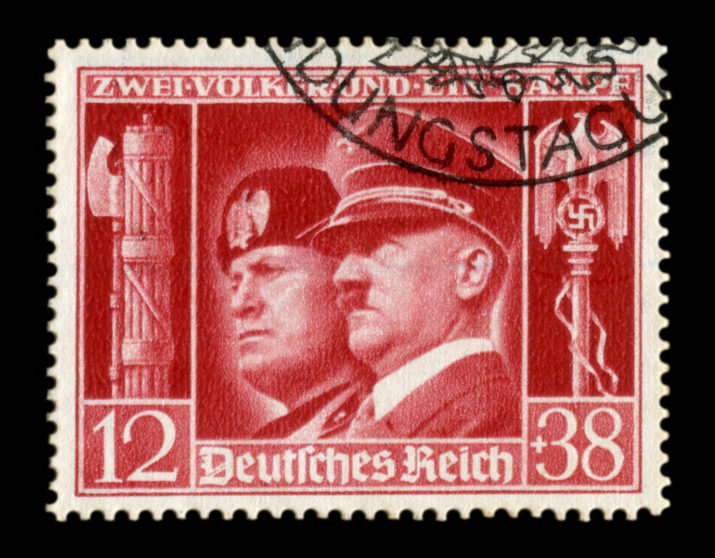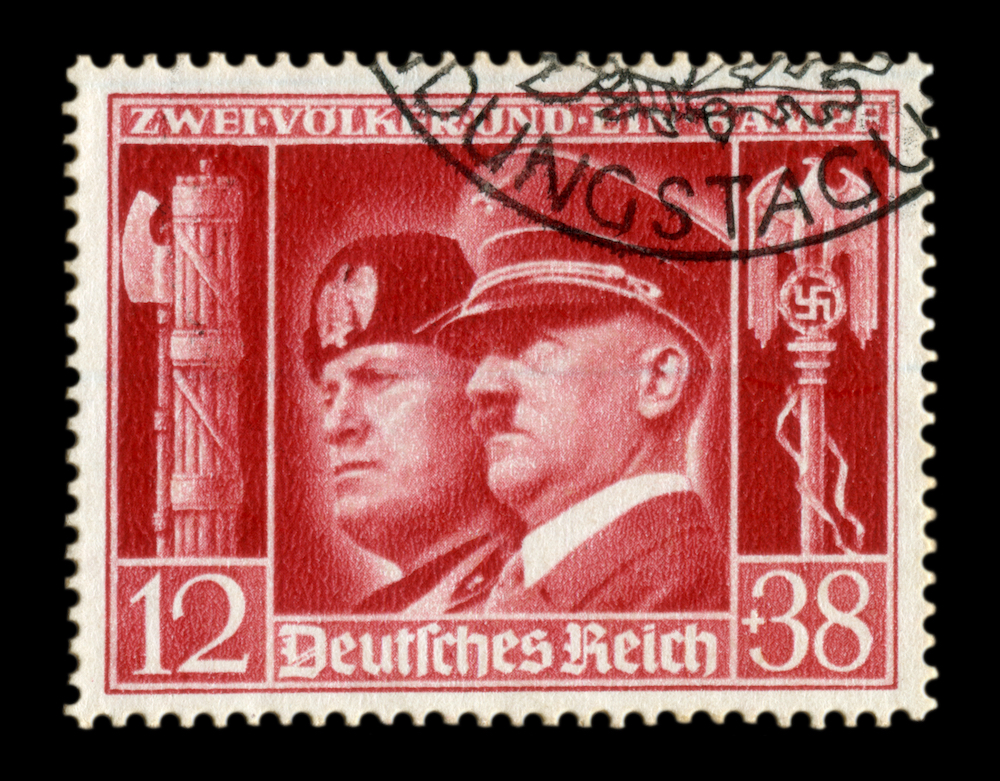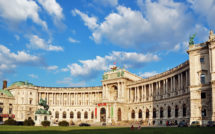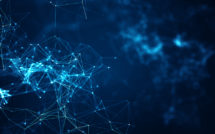
Bringing Digital History to Large Undergraduate Courses: Teaching “Digital World Wars”

This is part of our Campus Spotlight on the University of Washington.
The digital revolution is changing the history profession. Vast amounts of archival materials are now digital, and digital search has both sped up and fundamentally altered many aspects of historical research. Scholars employ computational and data visualization methods borrowed from data science to frame and answer historical questions, and often these methods are also used to reach and engage with wide-ranging audiences both inside and outside the academy. As a result of these many changes, digital history (and its close corollary, public history) has come to be seen as a fundamental part of scholarly activity. There are, for example, many excellent public digital history projects run by scholarly institutions that provide cutting-edge peer reviewed scholarship, such as the International Encyclopedia of the First World War, as well as archives that have put exciting oral histories and documents online, such as the Library of Congress Veterans’ History Project.[1] An increasing number of academic job postings in these fields attest to the importance and acceptance of digital history among scholars, and the American Historical Association recently published guidelines for the “professional evaluation of digital scholarship for historians.”[2] Yet, how is digital history changing how we teach undergraduates?
Undergraduate students today know they live in a digital world. Indeed, they are overwhelmingly digital natives who navigate databases and reach for eBooks without giving these choices a second thought. Many students—inside and outside of history departments—imagine themselves in careers where data, data analysis, and digital research will play central roles. What can historians offer them as they prepare for these futures? In 2019, we, a faculty member and graduate student at the University of Washington (UW) History Department set out to tackle ways to teach undergraduates to become savvy users of digital sources and methods. How can we make digital history for a digital world? At UW, most digital humanities courses that introduced students to these questions happened in small seminars. We wanted to bring digital history into the context of a large lecture, which we saw as a chance to introduce large numbers of students drawn from across our campus to these exciting developments in the historical field. Our course, we hoped, we would address both the now-fundamental place of the digital in historical research and the ways that history and the humanities can help inform fields like data science.
“Digital World Wars,” then, was an interdisciplinary teaching project from the start. Our pedagogical approach was based on two observations we both made in our own teaching (we are historians of Nazi and Weimer Germany, and the military history of the British empire, respectively). First, overwhelming numbers of students have a passionate interest in the history of war, but they tend mostly to approach this subject from an American or European lens. We wanted to complicate these approaches and engage students in conversations about how events that might seem to be uniquely European problems (such as aerial bombing, fascist ideology, and genocide) in fact have longer, global histories that are often entwined with histories of European and American imperialism. Second, and perhaps more than any other historical subject, the archival remnants of the world wars have wound up in digital forms and on public platforms. Millions of primary source documents relating to the wars have been digitized and are readily available online, often in text-searchable formats. Likewise, countless public history projects including podcasts, family history collections and websites, oral history collections, interactive maps, and collaborative digital encyclopedias focus on the world wars. We aimed to capitalize on this confluence of student interest and abundant resources in order to bring history and data science together.
A digital history class and a new military history class
The goal of our project was not to teach students to build websites, as we considered this to be a skill they could learn elsewhere. Rather, we wanted to help students explore the many ways that historians use digital resources and methods in their work, and to imagine how they could participate in digital history themselves. We also wanted them to think about the interdisciplinary practice of data science—the practice of using computers to analyze sets of data that are so large that they overwhelm non-computational methods. History, we argue, is an ideal field for learning data science and its methods. It presents students with intrinsically fascinating, complex data sets that are incredibly messy and represent real-world information and experiences. For students in STEM fields accustomed to thinking about data in the abstract, historical databases offer the opportunity to slow down and critically consider how data is collected, constructed, recorded, and perhaps later digitized and organized. Moreover, history provides them with the skills to question how the framing of analysis impacts outcomes and what gets shared with public audiences.
We also envisioned teaching a history of the world wars that challenged traditional military histories, putting these two major events of European history in world-historical context. This sometimes meant reaching beyond the bounds of our expertise as Europeanists, but it also meant prioritizing new directions in our respective fields. This was immediately easier to do for the Second World War—centering the Pacific theatre was an obvious move. Taylor Soja wrote and delivered a series of lecture units on the First World War in Africa that taught students about the global character of that war. After all, the first and last shots of the war were fired in Africa. We also made other, more creative pedagogical choices, such as devoting the first day of class to a lecture on the history of war in nineteenth century European empires. We also emphasized the development of military technology from machine guns to concentration camps, and tracked the concurrent evolution in the ways in which civilians were treated in wartime. While centering our analysis of racism, we also integrated women’s and gender history and touched on queer history.
Teaching digital history skills in workshops
The central challenge of “Digital World Wars” was finding a way to raise complex questions about data and to teach technical skills to about one hundred students in a large class. We made a decision early on that we would not teach students to code. Instead, we wanted to emphasize the critical thinking skills historians bring to bear on their work and to help students apply those ideas to the realm of data and the digital. We opted, then, to teach students to use “out of the box” digital tools, or pre-existing software and online tools that would enable them to get from data to analysis without too steep a learning curve. At the same time, students with backgrounds in computer science or data analysis were encouraged to apply those skills to the critical contexts and conversations we wanted to create. With such high enrollments (and with the added challenge of teaching the course for the first time in the Fall of 2020, while our university was operating remotely), we decided to design three out-of-class workshops that would focus on the technical aspects of digital history, and to precede these workshop assignments with readings and in-class conversations that prepared students to understand why we wanted them to learn the digital skills each workshop presented.
Our three digital workshops were interspersed between lecture days, and were designed to feed into a major digital final project for which students could:
(a) make a public facing podcast, or
(b) compile, analyze, and represent a data set related to the wars using the data science skills they learned in class.
The digital history workshops were:
- What is historical data? What is digital history?[3]
We wanted to begin by engaging students in big questions about the value and uses of digital history and the ways historians that engage in the digital world. First, we asked students to explore a digitized database of primary sources, British Concentration Camps of the South African War, prompting them to consider the ways historians have used digital humanities up to this point to share, clean, organize, and draw conclusions from digitized data.[4] Then, students contributed to a public mass transcription project on Zooniverse, a participatory platform that provides users with the opportunity to contribute to major transcription and data classification projects in the humanities, social sciences, and even the hard sciences.[5] By participating in these crowdsourced projects, students not only gained firsthand experience helping historical data to become digital, but also had an opportunity to reflect on the ways the constraints of digitization might shape how project users interact with history later on.
- Analyzing and visualizing historical data[6]
This workshop functioned as an important transition, moving students from a critical consideration of what digitized historical data is to the process of data analysis. It taught basic data science concepts, but purposefully didn’t require any pre-existing knowledge of coding or data science. Students chose from one of three complex data sets related to history (including a list of hundreds of Titanic passengers, a set of thousands of data points related to bombing during World War I, and a spreadsheet of information about criminal investigations in Nazi Germany) and asked questions about the possible uses and pitfalls of the data they had chosen. The workshop then turned to exploring one commonly used digital humanities technique: large-scale text analysis, or “distance reading.” Using Voyant, a freely available text-analysis tool that allows for exploration of different ways of reading large volumes of text for factors like word frequency, students explored the relationships between key terms in order to make new arguments about historical texts. By asking them to use these tools to “read” First World War memoirs now available in the public domain, this workshop also encouraged students to think critically about the availability of historical texts online, continuing along the lines of questioning they began in the first workshop.[7]
- Public digital history[8]
The final workshop asked students to become public historians and guided them through drafting, recording, and sharing their own podcast using the free software Audacity.[9] Beyond teaching practical skills in audio recording and editing, this assignment provided an opportunity to think critically about podcasting as a genre of storytelling, and to reflect on why particular topics and stories make good podcast episodes. Many students loved the podcasting process and chose to make longer podcasts—many of which incorporated historical sound clips, music, and other sound effects—for their final project.
Scaffolding out these assignments required serious planning and legwork in the summer before we first taught the course. We experimented with different digital tools and readings, wrote and re-wrote instructions and assignment prompts, and benefitted from a wide range of institutional support. We were fortunate to spend the summer of 2020 in a collaborative workshop learning from other digital humanists on our campus, thanks to a grant from the Simpson Center for the Humanities at UW, which was funded by the National Endowment for the Humanities. We also received funding from UW’s Center for Statistics and Social Sciences in order to incorporate the class into a new interdisciplinary minor in Data Science that was being developed in the College of Arts & Sciences. This support translated into time that we could spend developing and iterating on our workshops. Our hope is that our course, syllabus, and workshop instructions can and will become a resource for other instructors looking to bring digital history into their larger courses, and we encourage instructors to borrow from our materials (which are all available on our course website) and to get in touch with us if they have any questions.
What we learned
Embarking on this process with our students was no easy task, but the results were more than worthwhile. “Digital World Wars” has now been taught twice at the University of Washington, and each time we have been pleasantly surprised by the enthusiasm of our students about this kind of interdisciplinary work. In particular, students coming from a STEM background seemed most excited by what history and digital historical approaches could offer them. Other students contemplating a history or similar major found themselves intrigued and excited by their exposure to data and data science—one student has gone on to intern in data science at a major tech company, for instance. On the whole, our students were excited by what digital history could offer them and produced incredible final projects. Podcasts (which students researched and drafted like a traditional research paper) covered topics such as “The Blitz: Re-evaluating the Public Morale of London” and “Multiculturalism and Racial Conflict in LA’s ‘Little Bronze Tokyo’ 1941-1947.” Other students produced small-scale data analysis projects, including one titled “Did the Professional or Voluntary Status of Nurses in World War I Shape How They Reflect on Their Wartime Experiences?” and another about “Canadian Nurses and the First World War.”[10] Most students chose the podcast option because of the abundance of first-hand accounts that are available online as audio recordings and that can be integrated into their recordings as primary sources. Students integrated the words of WWI veterans, famous politicians, and survivors of Japanese American incarceration in order to bring history to life to public audiences.
We were surprised to find that the small number of students who were resistant to the interdisciplinary nature of the class considered themselves to be historians through and through, or, as one student commented, “we are NOT computer people.” As former data-agnostics ourselves, we were extremely sympathetic to this perspective, and responded to students’ hesitancy first with understanding, and then by reminding them that most historians (and history students) are already doing data science in their day-to-day work, even if they do not realize it. Students today are in a unique position to become historians who do realize—and who take advantage of—this change. Historians can be computer people too. In fact, many of us already are, and we might as well become more critical users of these tools.
We hope that other instructors will consider borrowing or improving upon pieces of our course in their own classes. History is increasingly digital. We should never stop teaching undergraduates to read and to write, but we should also think about teaching them how to use new technologies critically and effectively. Offering a course that serves as an introduction to digital history is and will continue to become an increasingly central part of many history department curricula. We have shown that the workshop model can help move this work out of small, specialized seminars and into larger, introductory courses that students from all kinds of programs and backgrounds might take. But every course that teaches these skills need not have “digital” in the title. Small parts of this material can be integrated into most classes, and without an inordinate amount of work on the part of the instructor. Teaching students not only to use and conduct research in databases of digitized primary sources, but also to think critically about their construction and perhaps to even engage in the building of one through platforms like Zooniverse is one way to do this. Another is to integrate podcasting or text analysis assignments into courses on a wide range of topics, as some other faculty in our department have since done. History and data science are disciplines that may at first seem quite different, but after developing this course we are convinced of their interdependence. And to our students, these connections are not a reach and instead come relatively naturally. We too, as instructors, have something to learn. Teaching digital history skills demands that we pay attention to the degree to which our own work as historians relies on the digital, and to be more deliberate about the choices we make about our data, archives, and the way we tell stories.
Taylor Soja is a PhD candidate in British and imperial history at the University of Washington, and beginning in fall 2022 Assistant Professor of History at Illinois State University. Her work has appeared in Gender & History, and her research is funded by a Mellon – Council for European Studies Dissertation Completion Fellowship. She is also committed to digital and public history, and co-directed the project Digital World Wars.
Laurie Marhoefer is the Jon Bridgman Endowed Professor in History at the University of Washington. Marhoefer’s research is on queer and trans histories in modern Germany and the twentieth-century world. His forthcoming book on the global history of gay rights in the 1930s is Racism and the Making of Gay Rights: A Sexologist, his Student, and the Empire of Queer Love (University of Toronto Press, 2022) and he is also at work on a book on trans people in Nazi Germany.
References
[1] See https://encyclopedia.1914-1918-online.net/home/ and https://www.loc.gov/vets/
[2] “Guidelines for the Professional Evaluation of Digital Scholarship by Historians,” The American Historical Association (June 2015), https://www.historians.org/teaching-and-learning/digital-history-resources/evaluation-of-digital-scholarship-in-history/guidelines-for-the-professional-evaluation-of-digital-scholarship-by-historians
[3] http://depts.washington.edu/digitalww/workshop-tutorials/workshop-1/
[4] https://www2.lib.uct.ac.za/mss/bccd/
[5] https://www.zooniverse.org/
[6] http://depts.washington.edu/digitalww/workshop-tutorials/workshop-2/
[8] http://depts.washington.edu/digitalww/workshop-tutorials/workshop-3/
[9] https://www.audacityteam.org/
[10] Examples of these and other student projects can be found here: http://depts.washington.edu/digitalww/student-projects/
Published on April 18, 2022.




